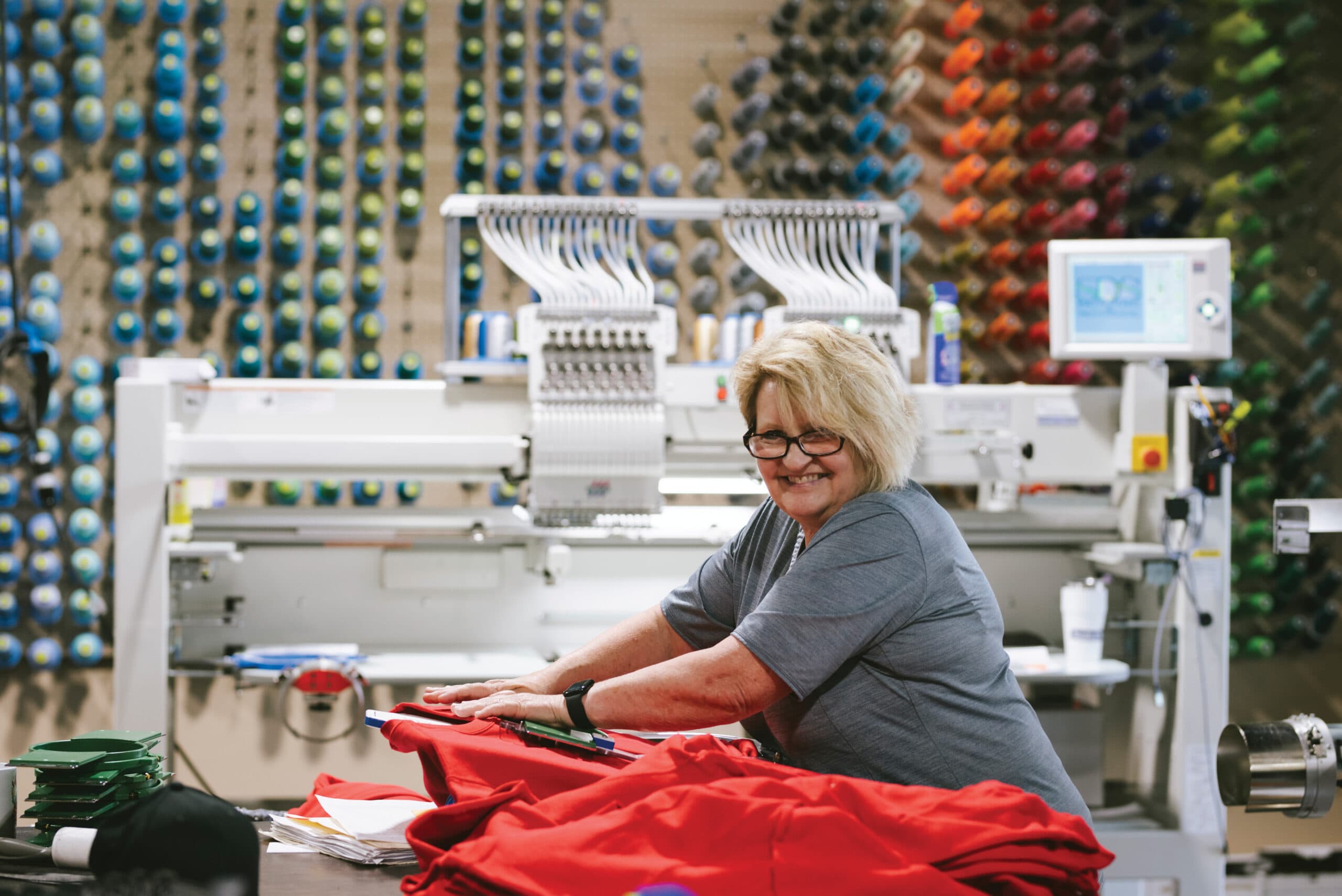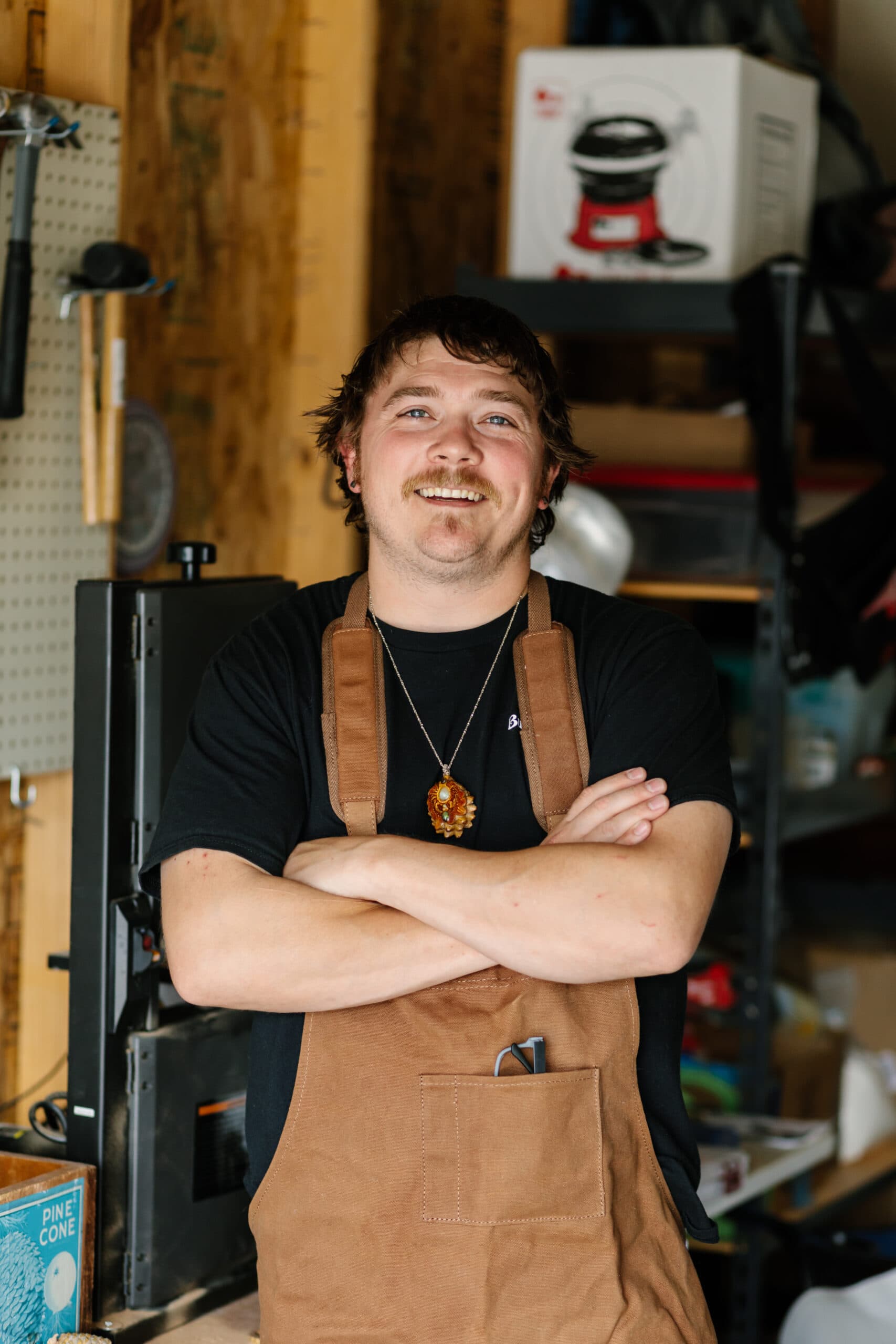Boondoggle Baking
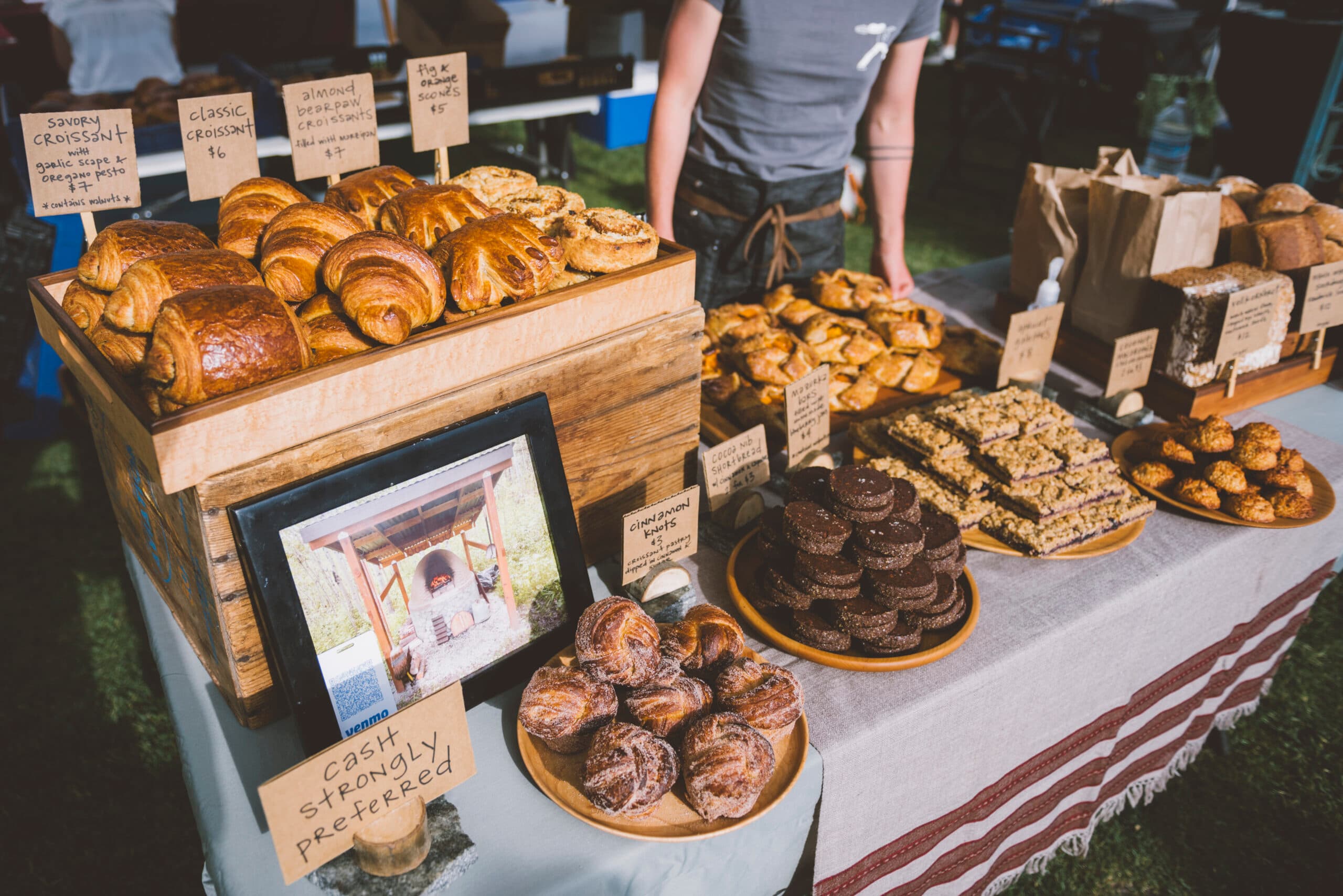
While living and working in Antarctica, Amelia Lohrenz was participating in a group trip that she noted at the time was a “boondoggle.” The term stuck with her.
“A boondoggle is a trip or an activity that is ostensibly useful, but it is basically for morale,” Amelia says. She aligns some of her own adventures with this word.
The sense of joy Amelia finds in baking led her to apply the word to her own enterprise, Boondoggle Baking. The fun behind this moniker includes using an age-old baking method, and an approach that requires time, patience, and passion.
Amelia’s property, located on the outskirts of Tetonia, is surrounded by thick aspen growth. Behind her home, she has created a mud oven in which she hones her sourdough baking process. Her mud oven, also referred to as a cob oven or earthen oven, is a throwback to the ancient world with elements of nature shaping its function.
“This is good ol’ Teton mud and rocks,” Amelia says. “The protective structure that shelters the oven costs far more than the oven itself.” Made of treated wood and galvanized steel roofing panels, the shelter is critical to the oven’s survival. Should it be exposed to elements such as rain or snow, it would disintegrate. Amelia, alongside her partner Andrew McCarthy, built the mud oven in the fall of 2021.
“I did not intend for it to become a commercial endeavor, or it would have been a lot bigger,” Amelia says. She attended a workshop as part of the Grain Gathering at Washington State University, during their annual Bread Lab Collective, a group that works to put sustainability and nutrition at the center of the food conversation.
There, she took in a workshop led by Kiko Denzer about making mud ovens. Amelia purchased his book and, after some time, decided: Why not make my own? “It was either that, or build a chicken coop,” she says, laughing.
The process of preheating the oven involves sheer manpower. Wood is chopped and fed into the confines of this large baking vessel. Once the fire is lit, it has to burn for at least two hours to produce white-hot coals. The top of the interior of the oven should be white when ready, and the baker has other tests available to ensure the proper temperature has been achieved. “It’s ready when you poke into it, and all of the hair on your arm burns off,” Amelia says, grinning.
While any other baker would simply preheat an oven by turning a knob, there is no simple switch for Amelia’s handmade equipment. “This is baking in its oldest form,” she says. “There’s no flipping this thing on or off.” Once the oven is searing at just over 600 degrees, Amelia throws a pizza in for good measure. This is both a test for heat and a ritual of meal-making that precedes the creation of her sourdough loaves.
“I can place six, twenty-four-ounce loaves in at a time,” she says. “The first batch takes twenty-five minutes, and the second takes forty.” As the process moves along, the oven loses heat and there is no recreating the initial blaze during baking. For one full firing, Amelia is able to bake a dozen loaves.
After the heat diminishes, warmth remains in the oven. Amelia has attempted to use the full firing and the residual heat, post-firing, to produce other baked goods. Apart from her experiments with yeasted dough, which require impeccable timing, she has tried to use the captured heat to bake cookies. Because of the intricate timing required, however, Amelia had to let go of using the complete arc of the heat. “It turns out that two ancient, imperfect processes make the perfect marriage—the mud oven and the sourdough,” she says.
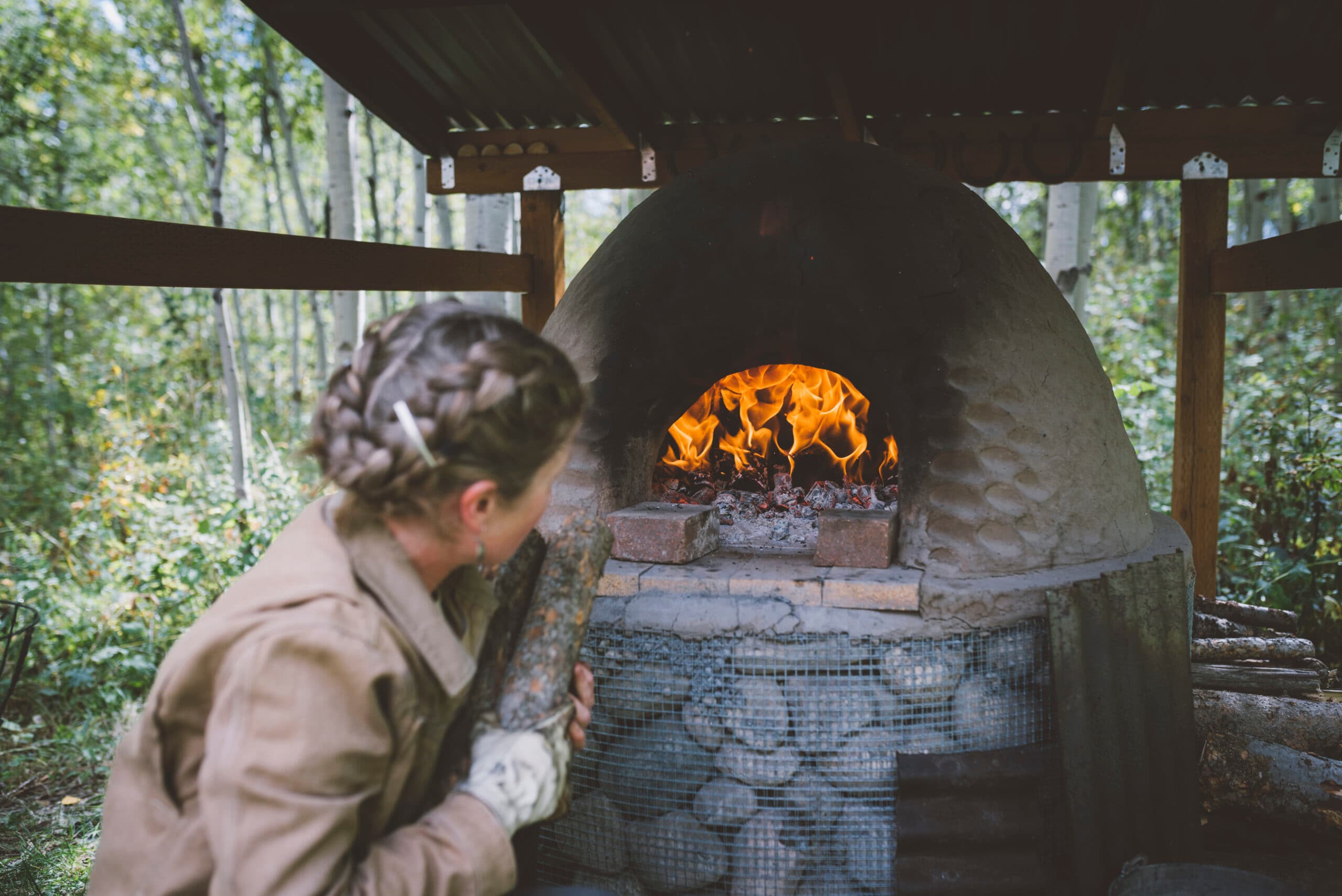
Amelia Lohrenz, stokes the fire in her mud oven, getting it ready for her weekly batch of sourdough breads for the Teton Valley farmers market. Boondoggle Baking, is a one woman operation out of her home, using organic, fresh milled flour and locally sourced ingredients. Instead of spending her usual summers in Denali, Alaska, Amelia decided to build her own mud oven in her backyard using clay from the property and an old wheel rim and bring her own personal baking recipes to life for folks in the Tetons. Farmers market goers were quick to catch on and she began selling out immediately. September 22, 2022 Tetonia, Idaho
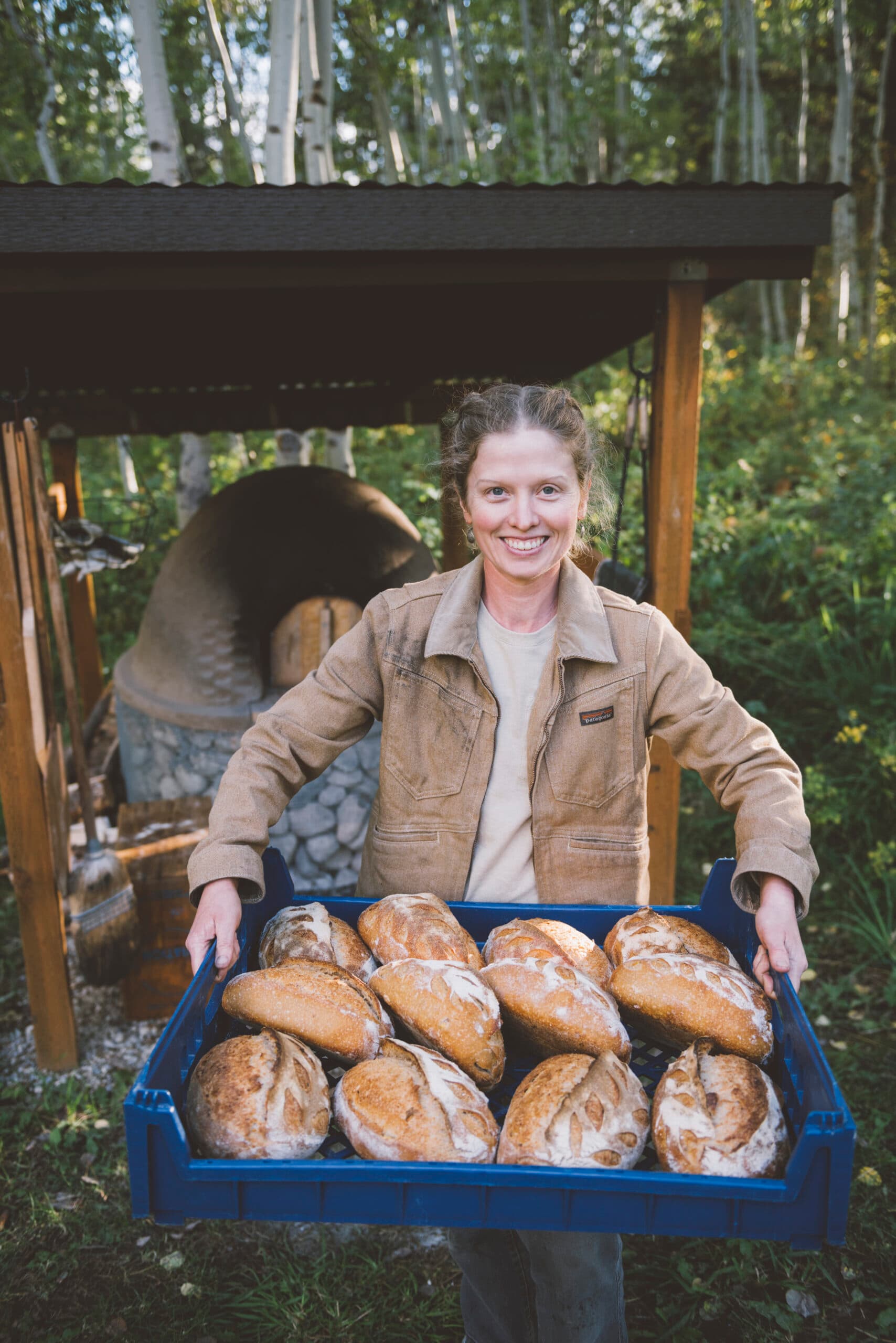
Amelia Lohrenz, unloads her mud oven during her weekly bake of sourdough breads for the Teton Valley farmers market. Boondoggle Baking, is a one woman operation out of her home, using organic, fresh milled flour and locally sourced ingredients. Instead of spending her usual summers in Denali, Alaska, Amelia decided to build her own mud oven in her backyard using clay from the property and an old wheel rim and bring her own personal baking recipes to life for folks in the Tetons. Farmers market goers were quick to catch on and she began selling out immediately. September 22, 2022 Tetonia, Idaho


Growing up adjacent to U.S. military facilities (her mother worked as a civilian for the Armed Services) allowed Amelia to experience home in many places. She has lived in Iceland, Japan, Italy, and Germany. Once on her own as an adult, she found herself in Alaska, Antarctica, the Pacific Northwest, Glacier National Park, and Boston.
She did not pursue a formal culinary education but instead matriculated as an art major. Her training in food has evolved on-the-job, initially with a master chocolatier, and then with colleagues in baking. And a lot of trial and error. Throwing one’s hat into the art of making food reflects a willingness to experiment, and the fact that Amelia identifies as an artist leaves room for personal finesse.
She came to the valley because of love, she says, moving out to be with her partner. After a variety of valley jobs, she ended up working at Victor’s Canewater Farm for a summer during the COVID-19 pandemic. Through that connection, she established relationships with sources in grain. Just as an artist must choose the right tools to approach a composition, Amelia seeks out the particular ingredients that will make her creations sing with flavor.
Through Hillside Grain in the Wood River Valley, she obtains stone-ground, high extraction flour. For the Vollkornbrot loaves, a traditional grain loaf, she sources closer to home from local outfit Grand Teton Ancient Grains for rye berries.
“They grow predominantly organic Einkorn wheat, and I get whole rye berries from them,” Amelia says. Farther afield from the roots she has established in Idaho is Conservation Grains out of Choteau, Montana. “I’ve started getting rye flour and malt from them,” she says. Sourcing local flour that had not been sprayed with chemicals was very important to Amelia. “These are all people who are doing the good work, for sure.”
The baked goods Amelia crafts have seen great success, especially at the Teton Valley Farmers Market held Fridays throughout the summer. She has, many times over, been the first booth to run out of product while selling there. This is a bragging right that makes her proud, and clear proof that her approach is working to its potential.
On the other hand, the yield she has committed to, thus far, does not meet the demand for her sourdough loaves. “From a craft standpoint, I love my mud oven, but from a production standpoint, it’s preposterous,” she says. But Amelia is a problem-solver who carries a passionate commitment for the process. She hopes to rebuild the oven this spring and expand beyond the existing footprint in order to produce more.
Look for Boondoggle Baking at the Teton Valley Farmers Market for the summer season, hopefully with Amelia’s access to a larger-capacity mud oven to better meet demand. And know that the baked goods purchased and enjoyed are a celebration of ancient baking traditions in an oven made from Teton mud and rock.
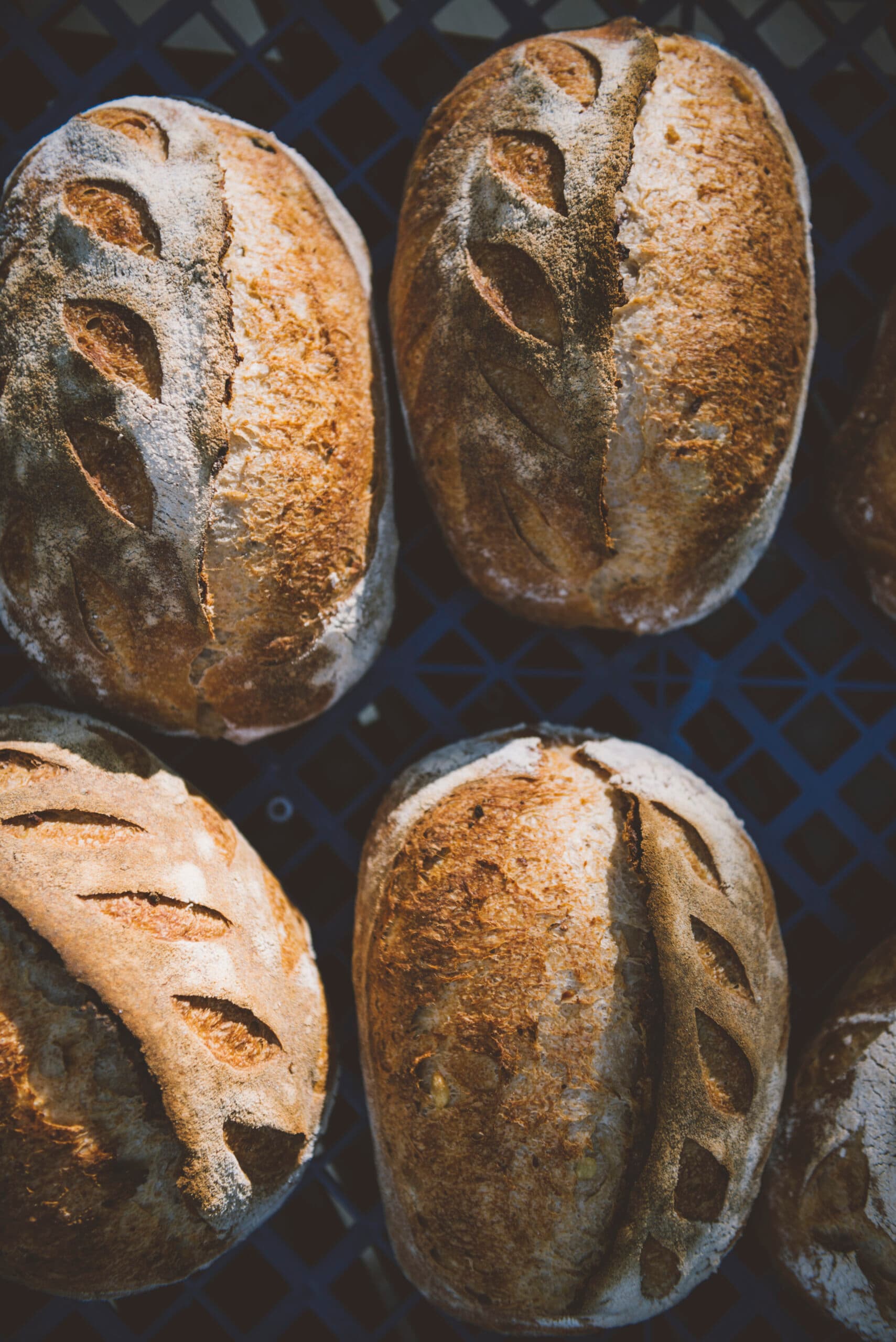
Amelia Lohrenz, unloads her mud oven during her weekly bake of sourdough breads for the Teton Valley farmers market. Boondoggle Baking, is a one woman operation out of her home, using organic, fresh milled flour and locally sourced ingredients. Instead of spending her usual summers in Denali, Alaska, Amelia decided to build her own mud oven in her backyard using clay from the property and an old wheel rim and bring her own personal baking recipes to life for folks in the Tetons. Farmers market goers were quick to catch on and she began selling out immediately. September 22, 2022 Tetonia, Idaho
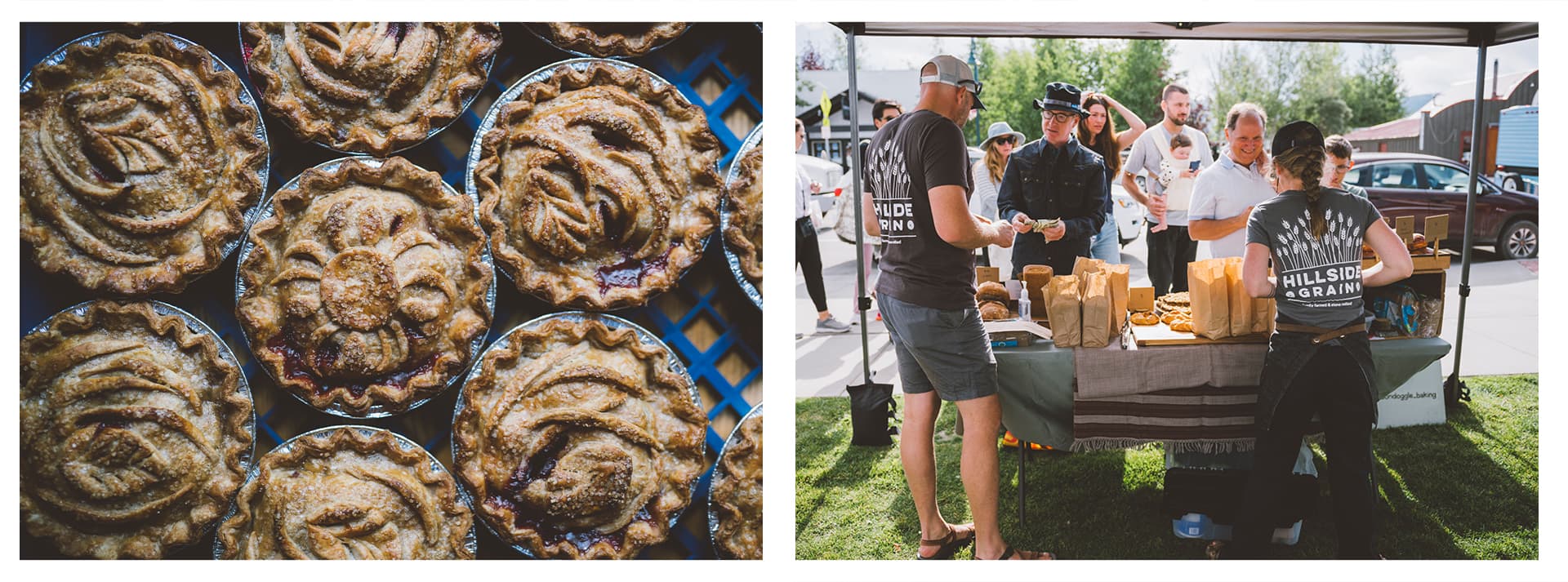
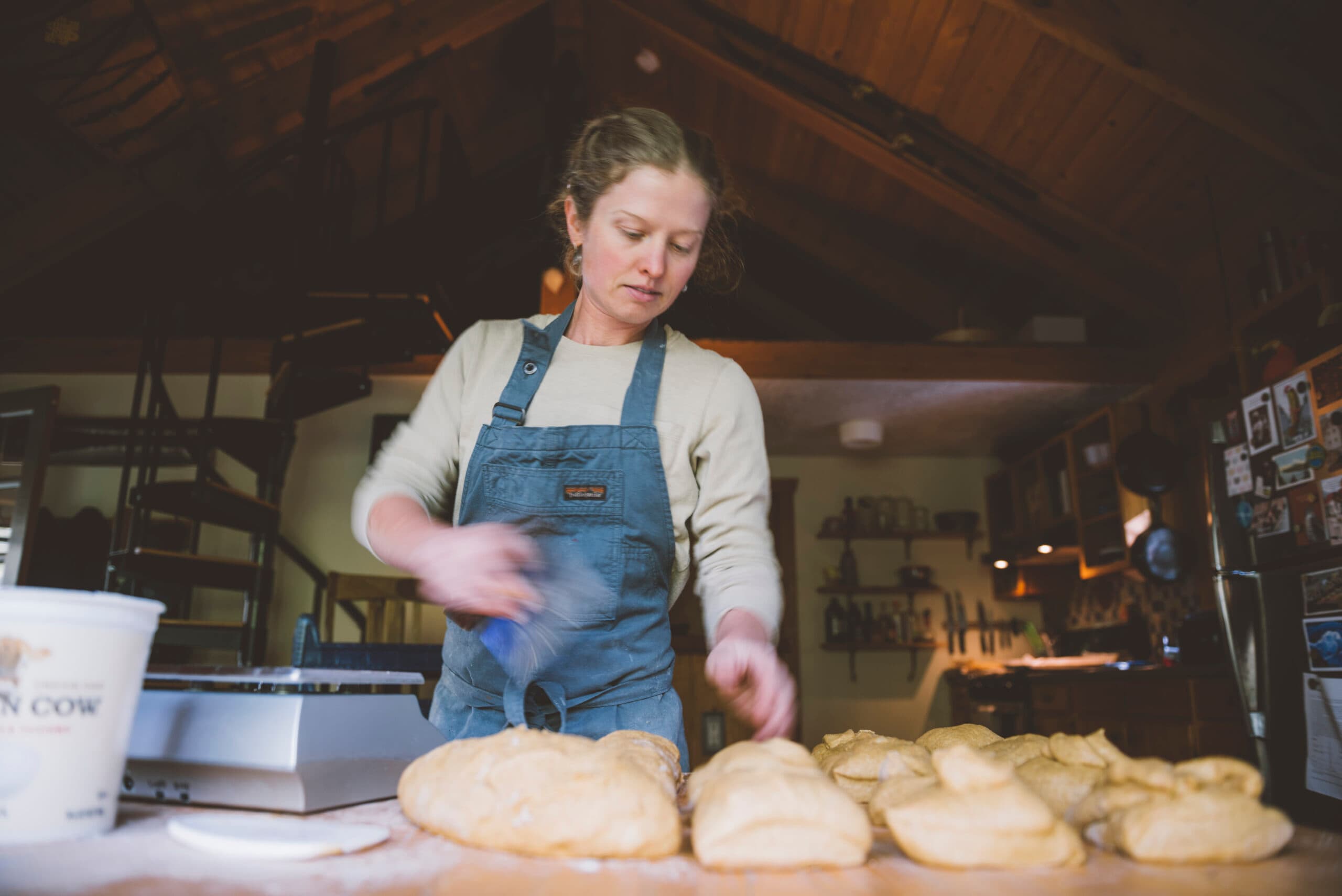
Amelia Lohrenz, preps loaves of challah headed for her mud oven during her weekly bake of breads for the Teton Valley farmers market. Boondoggle Baking, is a one woman operation out of her home, using organic, fresh milled flour and locally sourced ingredients. Instead of spending her usual summers in Denali, Alaska, Amelia decided to build her own mud oven in her backyard using clay from the property and an old wheel rim and bring her own personal baking recipes to life for folks in the Tetons. Farmers market goers were quick to catch on and she began selling out immediately. September 22, 2022 Tetonia, Idaho

